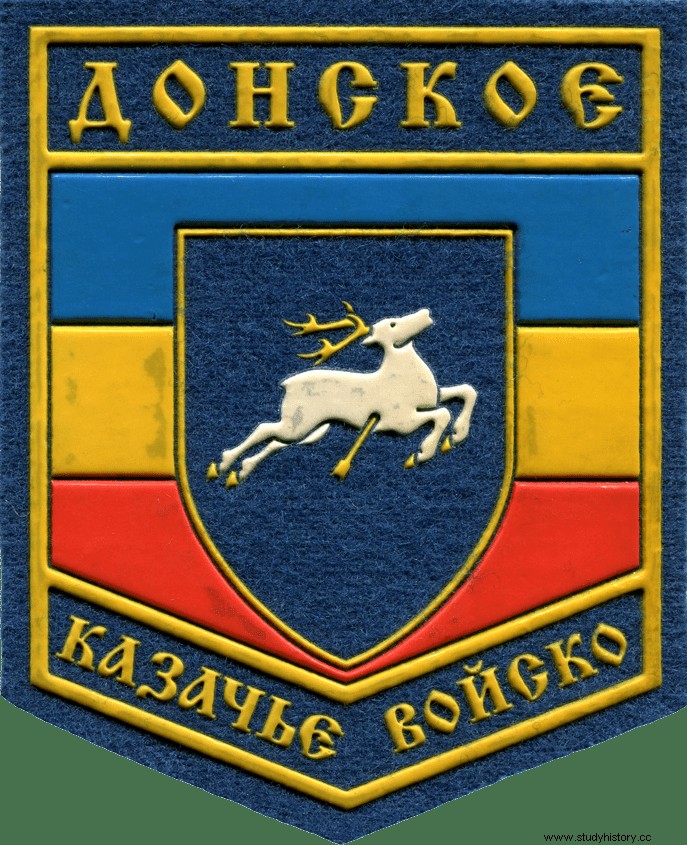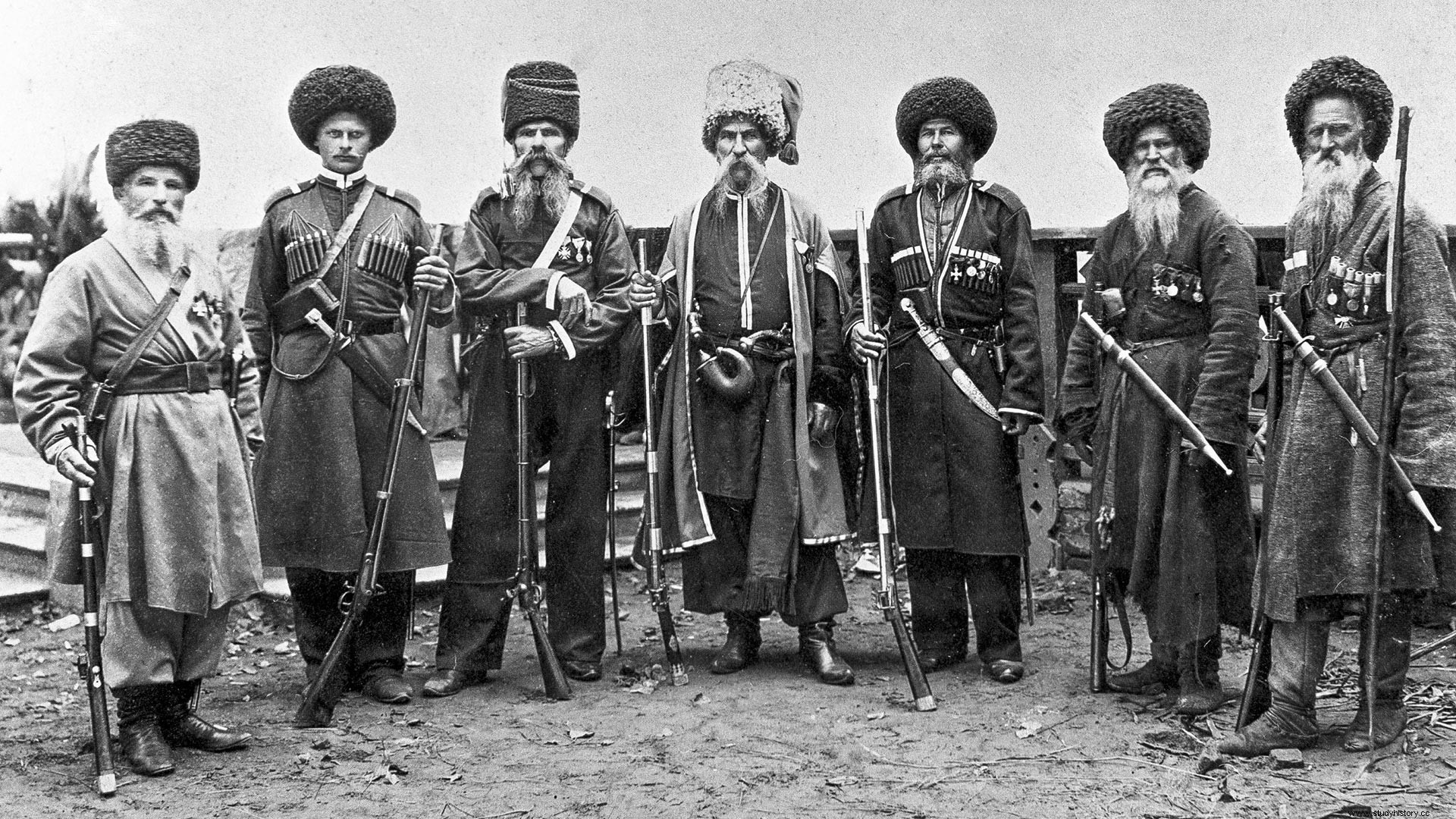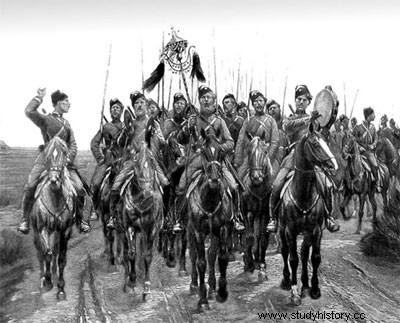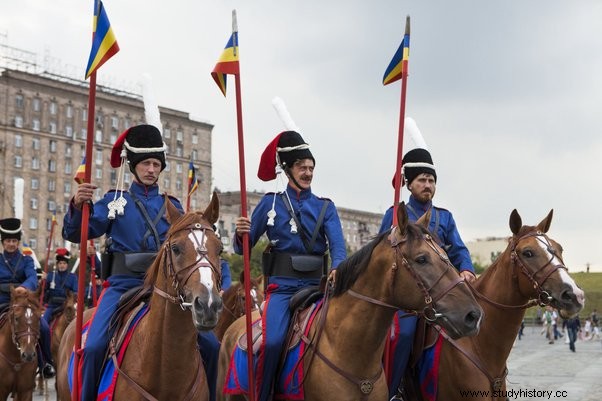Among the warriors known in history, the Cossacks are among the earliest in Russia. They started as servants and became part of Russia's military unit and rebelled when their freedom was threatened.
The Cossacks are a group of Russian warriors that still exist today. However, they do not have the same military power that they once had.
They played a major role in expanding Russia's borders and were the cause behind three of the biggest uprisings in Russian history.
Cossack origins

The term 'Cossack' comes from the Turkic term Genzar , which means 'free man' or 'the adventurer'.
Turkic people are different ethnic groups that speak Turkic languages. The majority live in Central, Eastern, Northern and Western Asia and parts of Europe.
There are several speculated theories about where they came from.
One states that they were semi-independent Tartar groups, Turkish-speaking people who lived in West-Central Russia.
Some thought they were descendants of the Scythians, fierce nomads from Central Asia from about 7 BCE. Others follow the legend that the Cossacks evolved from mythical beings.
The most common and assumed origin story is that they were peasants who escaped serfdom (the status of peasants under feudalism) from Poland and Russia.
Despite these speculated origin stories, modern Cossacks discovered that their origin dates back to the 14th th century from what is now southern Russia and Ukraine.
Scientists believe they are of Slavic and Turkic origin.
The Cossacks started out as a collection of fugitive peasants, fugitive slaves, escaped convicts and deserted soldiers. They lived on the borders beyond the reach of Russian authorities, along the rivers Don, Dnieper and Volga.
Early Cossacks were bandits and mercenaries.
Through robbery, hunting, fishing and cattle herding, they supported themselves and later formed military formations for their own defence.
Soon after, mercenaries became recognized horsemen and part of a warrior caste of free-spirited peasant-riders.
From their 300-year-old development, they developed their own customs and traditions and even became special units in the Russian army.
Their symbol was a deer that continued to stand even though a spear pierced its side.
Traditional clothing for a Cossack was a tunic and a long black or fur hat.
Among their admired values were cleanliness, honesty, hospitality, military skill and loyalty to the Tsar.
Drinking alcohol was an important part of Cossack culture and avoiding it was forbidden.
Cossack community
The Cossacks managed to organize themselves into self-governing societies.
Each had its own name, army and elected leaders and functioned as separate ministries.
When the Cossacks built a network of forts, their numbers increased.
The Don Cossacks, the first emerging Cossack group, were the largest and most dominant of the Cossack subgroups.
They were a group of mercenaries who lived around the Don River, south of present-day Russia.
After 16 th century, they grew large enough to be the most powerful military and political network.
In addition, they grew so large and powerful that Peter the Great of Tsarist Russia recognized and gave them an official seal.
They established settlements in Ukraine, along the Volga River, in Chechnya and the eastern Caucasus.
In 1914, most of their communities were in southern Russia, between the Black Sea, the Caspian Sea, and the Caucasus.
Cossacks and conflict
The Cossacks were always in a state of conflict.
They either engaged in military campaigns for the Russian government, fought with neighbors and/or among themselves, and routinely fought with other Cossack groups.
Traditional weapons were the lance and sabra, a knife in the belt and a four-foot whip (a nagaika ) in their book.
Among their tactics, Cossacks were known for their bravery as well as their cowardice.
If they saw a person separated from their group, they stripped them of everything, including the clothes on their backs, and often sold them as prisoners.
They were also known to switch sides, even when in the middle of a conflict.
If threatened by the enemy, they fled. They only fought if they outnumbered the enemy two-to-one.
Military democracy
The Cossacks avoided a system of serfdom, chose their own leaders and were self-sufficient.
jug was an annual meeting where Cossacks made important decisions, elected leaders, distributed land and punished criminals.
A community, known as voikam , was led by an elected leader, the Ataman , who was often the oldest member of the community.
Communities voted in nominees with a show of hands and shouts of "Lyubo!" ("It's our pleasure!") and “Neyubo!” ("It doesn't please us!").
As for their legal system, the thieves were flogged publicly in a square called a Maiden under a krug.
A Cossack who stole from another was sometimes sentenced to death by drowning.
Soldiers convicted by a military court were publicly flogged while kneeling over a bench of the executed by the fire brigade.
Women and marriage
Along with not having a lord and property, Cossacks were also without women, which posed a problem.
Since the early Cossack lifestyle did not include married life, the growth of their societies depended on the arrival of a new refugee or the offspring of women captured during raids.
If a wedding took place, the couple made a public appearance to declare themselves husband and wife.
It was just as easy for divorces. However, they often involved the sale of the divorced wife to another Cossack.
Women played a subservient role in settlements, such as taking care of the home and raising children.
Husbands could abuse, sell and murder their wives with impunity, leading many women to loathe the Cossack concept of marriage.
Cossacks and the borders of Russia

In return for autonomy offered by the tsars, the Cossacks gave their military assistance.
Stationed as imperial guards, their camps were near the Don River, the Urals, Siberia, and the Black Sea.
At first, the Russian government was skeptical of the Cossacks' commitment to expanding their borders.
This view changed in 1570, when Ivan the Terrible hired Cossacks as mercenaries in exchange for gunpowder, lead and money, which they did not have in abundance. Their completed mission freed Russian prisoners enslaved by the Tartars and Turks.
The Cossacks helped to expand, define and protect the borders of the Russian Empire.
The Tsar often placed the Cossacks on the front lines of wars or military campaigns that needed ruthless warriors.
Although dependent on Tsarist Russia, both militarily and politically, the Tsar allowed the Cossacks to rule their territories as independent states.
After 17 th century, the Russian government tried to limit the freedom and privileges of the Cossacks as their numbers grew.
They demanded the Cossacks return the refugees who joined their forts. The Cossacks saw this as an attempt to violate their traditions and freedom.
At the end of the 18 th century, the border moved far into the south. It moved far enough to reduce the Cossacks' military importance.
In addition, the tsars tried to suppress and return the refugees to the estates of the nobles. The reason behind this is the angry nobles when they saw so many of their serfs leave and join the Cossacks.
To avenge the injustices of their traditions and freedom, the Cossacks rebelled, leading to three major uprisings.
The Cossack Revolution in 1670

In the Volga region, between 1670 and 1671, Stepahn Razin, a Cossack from the Don River region, led a Cossack rebellion.
The uprising brought together wealthy Cossacks who established themselves well in the region and the escaped serfs who sought free land.
Although there was a social protest element to the rebellion, their original aim was to destroy and loot villages.
However, it soon became a symbol of peasant unrest and therefore became political.
The new goal was to protect Cossack independence and protest against a centralized government.
They made it known that they supported the Tsar, but wanted someone who responded to the needs of the people and not just the upper class.
By destroying and looting villages, Razin wanted to take power from the authorities and give the peasants more autonomy.
The end of the rebellion
The rebellion slowly ended, which led to increased government control.
The Cossacks lost some of their autonomy and the Tsar tied closely to the upper class as both feared a future rebellion.
At the same time, the uprising slowly awakened the social consciousness of the poor.
Moreover, the rebellion suffered countless defeats. One of them was the Russian army, using Western European military techniques, which defeated Razin's 20,000 undisciplined and ill-equipped troops.
Razin fled to the Don River where Cossacks loyal to the Tsar captured him and handed him over to the Tsarist authorities.
He was taken to Moscow and publicly tortured and executed by quartering (cutting off his arms to the elbows and legs to the knees before beheading).
Despite the result, Razin is still a popular folk hero today.
The Bulavin Rebellion

In 1707, the Don Cossack Kondraty Bulavin led a peasant revolt.
The rebellion started because Peter the Great ordered to round up 60,000 serfs who fled from their masters to the Don River.
On October 8, 1707, the rebellion staged an attack to kill the Russian forces who gathered 3,000 serfs.
No matter how noble the cause, not all Cossacks supported Bulavin.
Some atamans, who remained loyal to the Tsar, planned to capture Bulavin and his rebels. The latter were already west of the Donetsk river basin to regroup before staging their second attack.
In February 1708, the rebel army returned to the Don River for another revolt against the Russians, to seize the political center of the Don River and advance to Moscow.
At the same time, the Tsar organized an army of 3,200 Russian soldiers to capture Bulavin and his troops.
In addition, some Cossacks in Bulavin's troops conspired against him.
On 7 July 1708, Bulavin was found dead after a shot in the head.
It is still unknown whether it was suicidal or from those who conspired against him.
The Bulavin Rebellion ended with his death.
Pugachev's Rebellion

Pugachev's Rebellion took place between 1774 and 1775.
It was named after an unknown Don Cossack, Yemelyan Pugachev, who led Russia's largest serf rebellion.
Pugachev claimed that he was Peter III who escaped the assassination in 1763 and his among the Cossacks beyond the Yaik River.
Although he did not resemble Peter III, the Cossacks, serfs and factory workers were drawn to his charisma and leadership qualities.
The rebellion consisted mostly of Cossacks who suffered economic deprivation and resented Catherine II's demand for compulsory conversion to Christianity.
Pugachev opposed the order and promised religious freedom, which gave him greater popularity.
They ravaged estates, massacred nobles and conquered cities.
The fall and aftermath of the rebellion
The rebellion faced many defeats, including one that left 9,000 to 10,000 rebels dead.
By August 21, 1774, the Don Cossacks saw that Pugachev was not Peter III of Tsarist Russia.
The Russian forces crushed the rebellion by September 1775.
Pugachev tried to escape, but his own Cossacks betrayed him and returned him to the tsarist authorities.
He was publicly quartered and beheaded in Moscow on 21 January 1775.
After the rebellion, Catherine II brutally suppressed the serfs. She further cut Cossack privileges and set up several garrisons throughout Russia.
Cossacks today

Since the dissolution of the Soviet Union, there has been a revival of the old Cossack brotherhood, and some of the Cossack land has been returned to him.
In 1999 there were 4,000 Cossack groups.
The Russian government sponsors some units.
Others are independent groups that keep their distance from the government, which sees them as corrupt and responsible for Russia's chaos and crime. In certain areas they formed vigilant home guards.
Certain groups also have strong ties with Russian nationalists with strong xenophobic, racist and anti-Semitic views.
Today, in Vladimir Putin's attempt to promote a nationalist ideology, the Cossacks returned as political and economic supporters.
Cultural significance for anthropology

In the study of cultures, the Cossacks prove to be a unique one that is proudly shared among those who follow their traditions.
Some of these traditions are kept alive by new arrivals and descendants of former Cossacks. In doing so, they are keeping part of Russia's history alive, as well as their own.
Despite their views on the Russian government and their actions, they evolved with modern times, which is the key to keeping their culture and traditions alive and growing.
Culture makes people understand each other better. And if they understand each other better in the soul, it is easier to overcome the economic and political barriers. But first they have to understand that in the end their neighbor is just like them, with the same problems, the same questions.
– Paulo Coelho, Brazilian lyricist and novelist.
